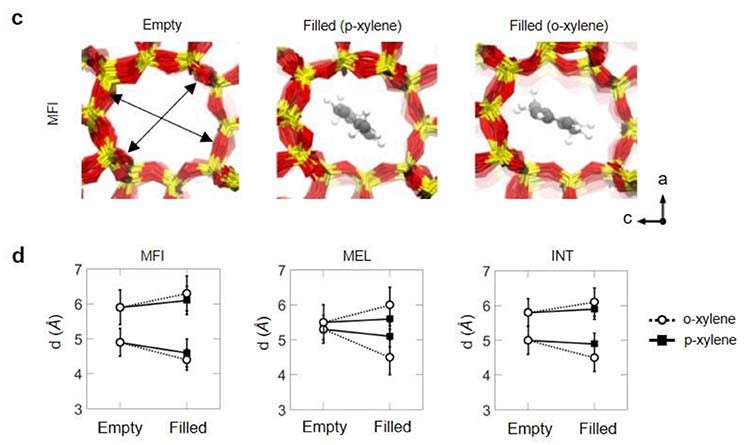Nat. Mats. 19, 443–449 (2020)
Zeolite MFI is a widely used catalyst and adsorbent that also holds promise as a thin-film membrane. The discovery of nanometre-thick two-dimensional (2D) MFI nanosheets has facilitated methods for thin-film zeolite fabrication that open new horizons for membrane science and engineering. However, the crystal structure of 2D-MFI nanosheets and their relationship to separation performance remain elusive. Using transmission electron microscopy, we find that one- to few-unit-cell-wide intergrowths of zeolite MEL exist within 2D-MFI. We identify the planar distribution of these 1D or near-1D-MEL domains, and show that a fraction of nanosheets have high (~25% by volume) MEL content while the majority of nanosheets are MEL-free. Atomistic simulations show that commensurate knitting of 1D-MEL within 2D-MFI creates more rigid and highly selective pores compared to pristine MFI nanosheets, and permeation experiments show a separation factor of 60 using an industrially relevant (undiluted 1 bar xylene mixture) feed. Confined growth in graphite is shown to increase the MEL content in MFI nanosheets. Our observation of these intergrowths suggests strategies for the development of ultra-selective zeolite membranes.
